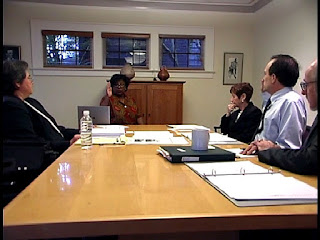With the use of Zoom and other virtual meeting places these days, everyone is becoming more conscious of how they look on camera.
For video depositions, the room, the lighting and how the videographer frames the witness has been not just important for ascetic reasons but also dictated by court rule. Here are the rules and some tips on lighting, camera framing and more that you may wish to adapt to your next video deposition and your appearance on the next video conference so you look your best.
Federal Rule of Civil Procedure 30(5)(B) states: “Conducting the Deposition; Avoiding Distortion. . . . The deponent's and attorneys’ appearance or demeanor must not be distorted through recording techniques.”
Washington State Superior Court Rule 30 (b)8(F) provides: “The area to be used for video recording testimony shall be suitable in size, have adequate lighting and be reasonably quiet. The physical arrangements shall be fair to all parties. . .
Regarding lighting, natural lighting is the best. However, if that’s not possible, find Hemmingway’s clean well-lighted place.
For a video deposition and perhaps your Zoom meetings, the camera should be close to eye-level. If the camera angle is from below, it can leave the impression the witness is powerful and for your Zoom meeting you might want that. But for a deposition, eye-level is a neutral camera angle and the required one. If the camera angle is from above, it will make the witness or you look weak or small. You wouldn’t want that for yourself, and, although you might like it for an adverse witness, it would contrary to a rule requiring that the “deponent’s appearance or demeanor not be distorted.”

No comments:
Post a Comment